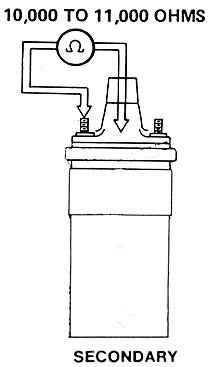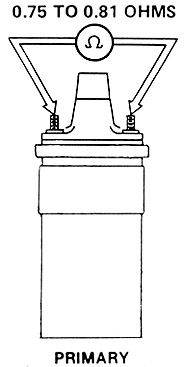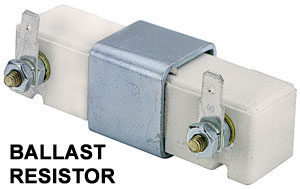
How to Test an Ignition Coil
This testing procedure is valid for just about any automotive
coil. Using an ohmmeter, check the resistance between the side terminals
of the coil. Do this with all of the wires to the coil disconnected. You
should see 0.75 to 0.81 ohm of resistance. Then check the resistance between
either side terminal and the center high tension terminal. The reading
should be 10,000 to 11,000 ohms. Any significant deviation from these numbers
would indicate that the coil is defective.

